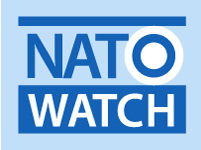
Three forces broadly shape NATO policy:
- an integrated military bureaucracy similar in many ways to that of most states;
- the preferences and prejudices of individual political leaders and opinion shapers, especially Heads of State, Defence and Foreign Ministers in the more powerful member states;
- and public opinion.
Of these three forces, public opinion is generally the weakest and arguably the most malleable and vulnerable to government propaganda, unbalanced or a lack of reporting in the mainstream media and the lobbying power of military-industrial interests. These interests also shape the NATO debates within ‘establishment’ think tanks. A number of independent civil society organisations have contributed critical analysis and reports on various aspects of NATO policy and some continue to monitor specific aspects of Alliance policy in relation to human rights (e.g. Amnesty International and Human Rights Watch), civil liberties (e.g. Liberty and Statewatch) and defence and security policy (e.g. the Acronym Institute, Arms Control Association, BASIC, Center for Defense Information, Centre for European Reform, German Marshall Fund, European Council on Foreign Relations, ISIS Europe, Oxford Research Group and Saferworld). But the work of these organisations does not concentrate on NATO; rather it is part of their overall work – invariably subsumed within other core objectives.
NATO Watch is the only independent non-governmental organisation with a remit to monitor and analyse NATO on a daily basis. It aims to provide more coherent, strategic and effective responses to NATO transformation and interventions that can better galvanise public opinion and exercise greater political leverage. We aim to plug the gap in informed and forward-looking analysis of the issues on the NATO agenda.
Photo: Mind the gap by Márcio Cabral de Moura
